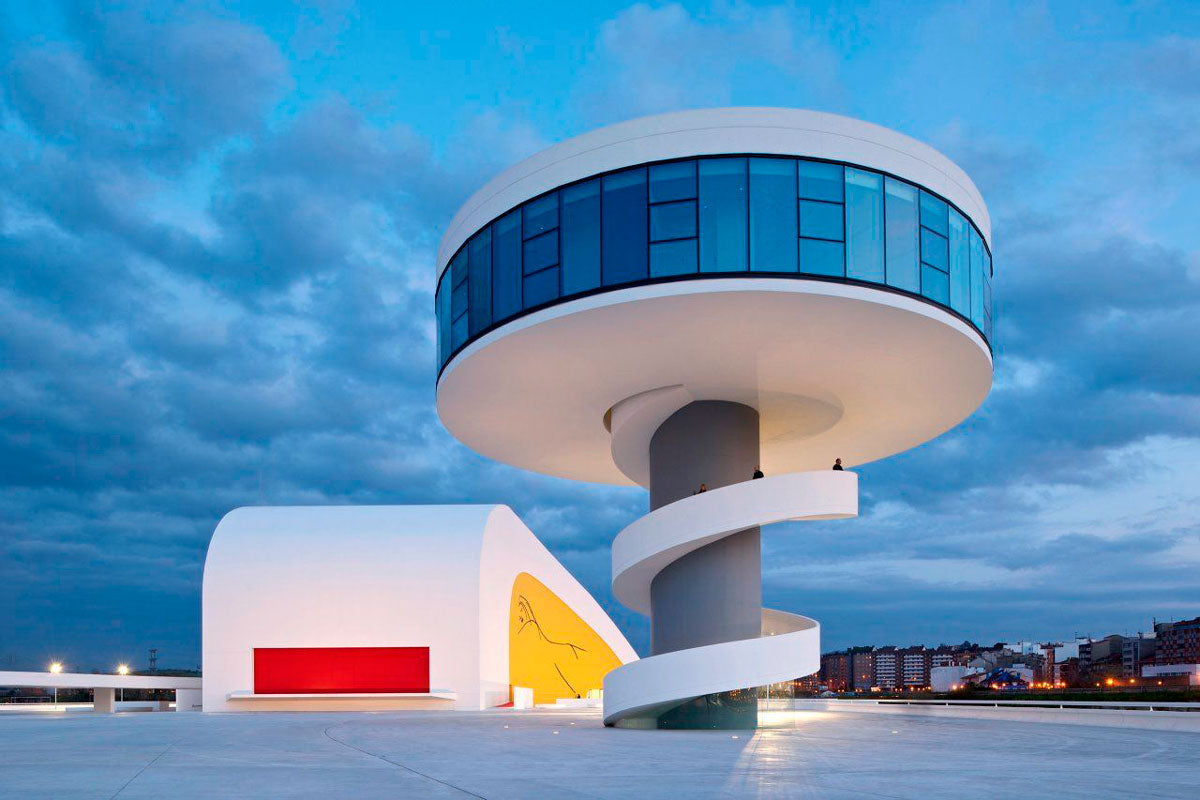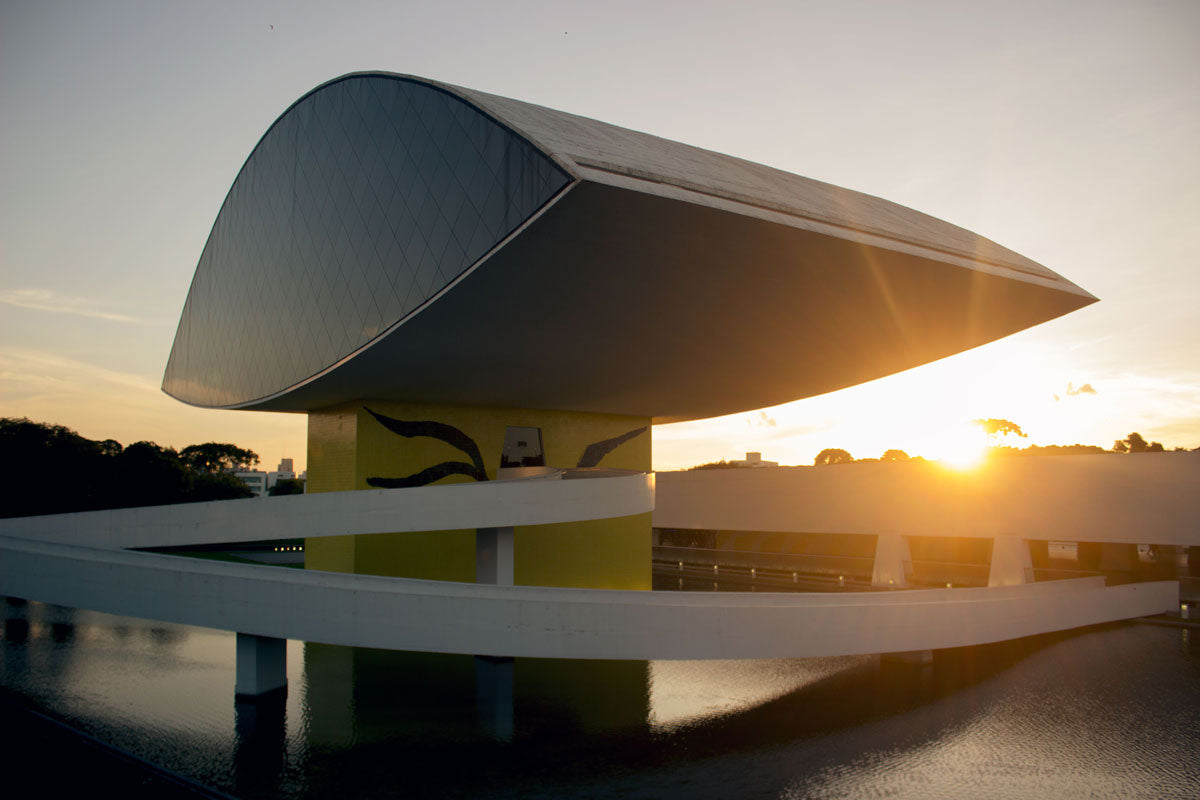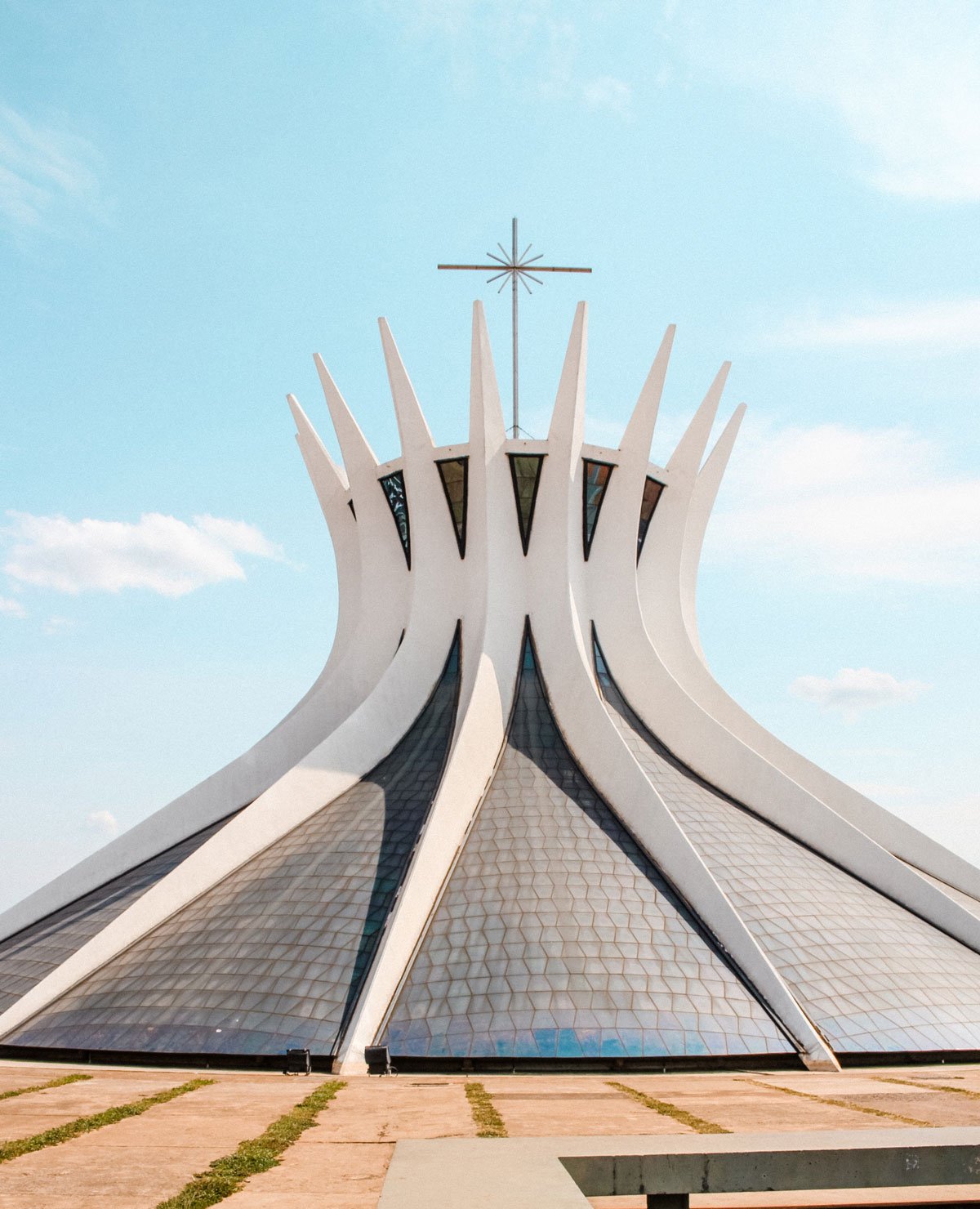Brasil es un exponente cultural a nivel internacional, su arquitectura es una de las principales. Grandes mentes han creado su camino en la escena, entre ellos Oscar Niemeyer (Río de Janeiro, 1907-2012). El arquitecto logró posicionarse como un ilustre del movimiento moderno, influenciado por Le Corbusier, sus obras reflejan su cosmovisión y reflexión sobre la existencia y el cambio.
His inspiration
Visually, he used to play with different geometric shapes, mixing half-circles, symmetric lines, pyramids, and curves. Some of his works even meant to reflect parts of nature, like the silhouette of a bird, which can be seen on some of his buildings located in Brasilia.
According to the Pritzker Prize, his work was conceived as a lyrical sculpture, which had a similar outcome as free-shape sculpture. When the architect received this award, he expressed that he had always respected architectural schools, including Mies van der Rohe’s elemental structures and Gaudí’s imaginative and delirious ones.
“I have to design what gives me pleasure in a way that is naturally linked to my roots and the country where I was born”.
Niemeyer stood out for looking for an aesthetic as different to what already existed as possible, although he was modest when describing his own pieces. He even said during a 2001 interview: “Perhaps you won’t like the buildings if you visit Brasilia, but you won’t be able to say you’ve seen something similar. And that is what architecture is about: invention”.

His work
Brazil’s landscape is painted with the architect’s work, especially Brasilia, where his contribution was to create the concept of city. With the capital city change in the 50’s, President Juscelino asked him to create the city’s public buildings, which have become the country’s icons, like Brazil’s National Congress, Brasilia’s Cathedral, Planalto Palace, and Alvorada Palace. The city has been appointed World Heritage by UNESCO.
His participation in designing the United Nations headquarters in New York stands out within his international works, where he collaborated closely with Le Corbusier. His growth skyrocketed when Mayor Belo Horizonte entrusted him the construction of a church and a casino by Lake Pampulha. This set defined the architect’s style, which became trend, particularly the details on the church, with mixed straight and curve lines, while the interior was decorated with hand-painted tiles.

The design of Ibirapuera Park in São Paulo in 1951 is also worth mentioning, which was made to celebrate the city’s 400th anniversary. Considered one of the world’s most beautiful parks, the idea behind the project was to have a large green area in the middle of the city with spaces dedicated to exhibitions. Inside the park, the spaces known as La Marquise and the Auditorium are considered one of the most iconic of Brazilian Modern style, led by Niemeyer. Even though most of his projects were public works, one of the most important ones was the Niemeyer House, thanks to it he became a revolutionary of architecture, which he later represented (1991-1996) in projects like the Niterói Contemporary Art Museum, whose designed is based on an inverted pyramid and is one of the artist’s most renowned works.
Several works by the artist can be appreciated in his hometown, most of them are single-family houses, but there are also public buildings like Rio de Janeiro’s Sambadrome, the Ministry of Education and Obra do Berço, which was his first project, built in 1937.

His life
Niemeyer studied at the National School of Fine Arts in Rio de Janeiro in 1929, which in 1931 was led by prestigious architect Lucio Costa. He gave him his first job, together they developed the Brazilian pavilion for the World Fair in New York and they worked together when Niemeyer committed to transform Brasilia as capital city.
During the creation of the new Brasilia, the man born in Rio de Janeiro was at the head of the school of architecture of the city’s university. However, during the 1965 coup d’etat, he was forced to quit the position, since his political ideology crashed with the new military government line. During the dictatorship, Niemeyer left the country for 20 years, reason why he opened a firm in Paris in the 70’s. In this office, he created works in France like the headquarters of l’Humanité newspaper and Le Havrel Cultural Center. This was the moment when the architect began to portray his vision outside his country, reaching countries like Algeria and Malaysia.
Despite having a solid space in Europe, Niemeyer’s heart never left Brazil and as soon as the dictatorship was over (during the 80’s decade), he did not hesitate and went back. He immediately began creating multiple public spaces where he left a new mark, which reflected his experience. Two years after his return, in 1987, Brasilia was appointed World Heritage by UNESCO. One year later, the architect was awarded with the Pritzker Prize. Upon his return to Brazil was when he created the Sambadromes in Rio de Janeiro and São Paulo, the Pantheon of the Fatherland, and the Latin America Memorial, where he placed a sculpture of a hand with a wound from which Latin America bleeds.
Niemeyer only stopped working when his health would not allow him to continue, but even after turning 100 years old, he remained active, participating in numerous projects, becoming part of the jury in charge of choosing the logo for the World Cup 2014 in Brazil. Unfortunately, he passed away two years before the event took place.


